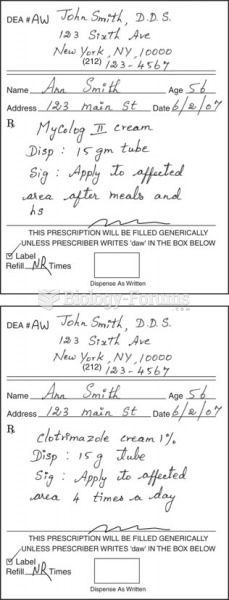|
|
|
Certain chemicals, after ingestion, can be converted by the body into cyanide. Most of these chemicals have been removed from the market, but some old nail polish remover, solvents, and plastics manufacturing solutions can contain these substances.
A recent study has found that following a diet rich in berries may slow down the aging process of the brain. This diet apparently helps to keep dopamine levels much higher than are seen in normal individuals who do not eat berries as a regular part of their diet as they enter their later years.
Thyroid conditions cause a higher risk of fibromyalgia and chronic fatigue syndrome.
There are 60,000 miles of blood vessels in every adult human.
If you could remove all of your skin, it would weigh up to 5 pounds.







